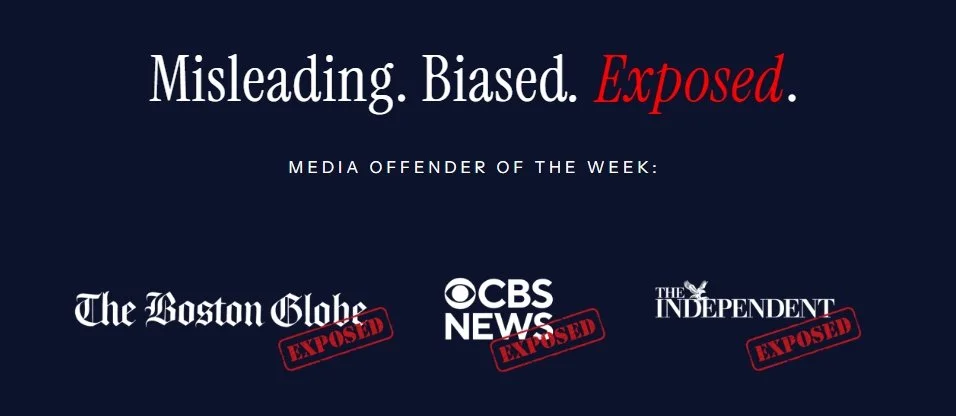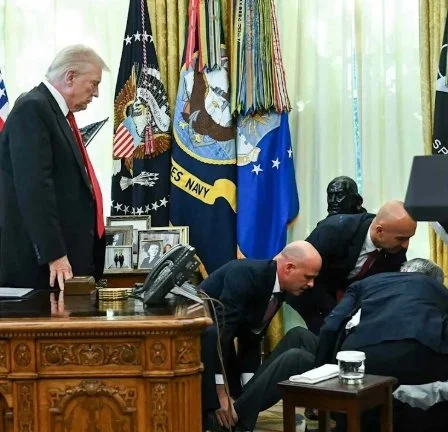Leadership in Crisis: Parallels Between President Donald Trump (2025) and King George III
Why Revisit an Eighteenth‑Century Monarch in the Age of Trump?
When political orders wobble under the weight of a single personality, historians and social scientists instinctively reach for comparative lenses. The urge is not merely antiquarian: a cross‑temporal comparison exposes the fault lines that tend to recur whenever an executive’s mind, temperament, or ambition collides with the limits of constitutional design. This essay juxtaposes two seemingly incompatible figures; King George III of Great Britain and President Donald Trump in his 2025 second term—to illuminate how personal instability and authoritarian‑leaning impulses generate strikingly similar forms of systemic stress, even when separated by 250 years, divergent ideologies, and dramatically different media ecologies.
Unlike standard biographies, this study is not primarily concerned with moral verdicts on either man. Instead, it pursues three analytic goals:
Causal Pathways – tracing how George III’s periodic incapacity and Trump’s polarising leadership style translate individual idiosyncrasies into state‑level disruption;
Institutional Reflexes – assessing which guardrails (in 18th‑century Britain and 21st‑century America) absorbed or deflected that disruption, and why;
Contemporary Lessons – extracting broader insights about democratic fragility, executive overreach, and the media’s evolving role in magnifying political turbulence.
The focus on a monarch felled by a probable metabolic disorder and a democratically elected president propelled by charismatic nationalism might seem eccentric. Yet both men turn out to be ideal test cases for the proposition that constitutional orders survive not by ignoring executive pathology but by recognizing and codifying limits on personal rule.
Theoretical Anchor Points: From Great‑Man Pathology to High‑Dominance Leadership
Historians once explained political crises through “great men” alone; modern scholarship insists on factoring in structures, culture, and contingency. This essay employs a two‑level model:
At the micro level lies individual pathology or temperament; George III’s recurrent mental illness, Donald Trump’s grandiose narcissistic profile and dominance‑oriented leadership.
At the macro level sit institutional safety valves: Britain’s slowly maturing constitutional monarchy, America’s Madisonian checks‑and‑balances. The working hypothesis is that when the micro force presses too hard, macro guardrails must either strengthen (codify new limits) or else crack (yield to executive overreach).
To keep the analysis grounded, the essay draws on three conceptual strands:
Medical History & Retrospective Diagnosis – scholarship on George III’s “madness,” debating porphyria vs. bipolar disorder and the complicating role of arsenic‑laden medication;
Political Psychology of Authoritarian Populism – research coding Donald Trump as high in narcissism, low in agreeableness, and bent toward in‑group/out‑group moral schemas;
Constitutional Adaptation Theory – the idea that crises accelerate institutional learning, forcing elites to specify once‑implicit norms (as Britain did with the Regency Act of 1811, or as the U.S. attempted with the 25th Amendment).
With these tools in place, we turn to the empirical narratives.
King George III: A Body Politic at the Mercy of a Body Ill
“Madness” in the Georgian Mindset
Born in 1738, George III was crowned in 1760 amid French‑Indian War expenditures and colonial restlessness. For the first two decades he appeared earnest, if obstinate. The first unmistakable collapse came in October 1788: court diarists describe the king talking for hours without pause, mistaking furniture for enemies, and screaming obscenities at the Prince of Wales. Aides resorted to straitjackets. Physicians tried bleeding, emetics, digitalis—treatments that likely worsened his agony.
In retrospect, the episode’s political significance eclipsed its medical drama. Britain had no statute detailing what to do when a monarch could not rule. Resignation was unthinkable; deposition smacked of regicide. With Parliament due to reconvene, Pitt the Younger improvised a Regency Bill granting the Prince of Wales limited powers under strict Treasury oversight. Charles James Fox countered that “the Prince has a right, in the present circumstances, to assume the government immediately.” For nearly four months newspapers, coffee‑houses, and caricaturists fanned the partisan flames. Only George III’s sudden remission in March 1789 suspended the bill.
The Long Decline and the Regency Settlement
A second major breakdown in 1810 proved irreversible. By then Napoleon’s Grand Armée had shattered Europe’s balance; Britain needed stable war leadership. The Regency Act 1811, passed with fewer fireworks than in 1789 formally vested executive power in the Prince Regent. Crucially, it set time‑bound financial limits and reporting requirements, ensuring the monarchy would survive as symbol while Parliament ran the machinery of empire. George III lingered blind, deaf, and likely psychotic until 1820. The takeaway: constitutional elasticity saved Britain from a succession crisis, but only after bruising collisions exposed the stakes.
Donald Trump’s Second Term (2025): Charismatic Disruption in a Madisonian Republic
Personality as Policy Engine
Donald Trump’s 2017‑21 presidency already redefined the boundaries of executive rhetoric, but the 2025‑29 term marks an escalation, liberated from re‑election constraints and buoyed by a re‑energised populist base. Political psychologists locate him in the quadrant of grandiose self‑regard, impulsivity, and social dominance orientation. What matters constitutionally is less the diagnostic label than the behavioural outputs:
A reported 129 executive orders in the first 100 days—triple the Kennedy‑Johnson average—including the resurrection of Schedule F, stripping civil‑service job security from tens of thousands;
Weaponised selective justice: pardons for January 6 defendants coupled with DOJ probes into “deep‑state” detractors;
Transactional foreign entanglements: a deportation‑for‑cash pact with El Salvador, flouting Supreme Court orders to repatriate an erroneously deported resident.
Each move tightens the president’s personal grip while daring coequal branches to respond.
The Media‑Rally Feedback Loop
Twenty‑first‑century media ecosystems amplify psychological traits at breakneck speed. Trump’s TruthSocial blasts, arena rallies, and livestreamed cabinet signings create a reality‑TV presidency in which shocks are features, not bugs. Supporters interpret volatility as authentic spontaneity; critics see growing evidence of impaired judgment. Either way, constant visibility melds policy with performance, complicating institutional pushback: law‑makers risk being cast as villains in an endless drama whose script the president keeps rewriting on the fly.
Convergent Patterns of Destabilisation
Despite epochal divides, five dynamics recur across both cases.
Erratic Communication
George III: torrents of disjointed speech, at times speaking for hours to empty rooms.
Trump: rallies that pivot from trade deficits to personal slights to apocalyptic warnings in minutes.
Impact: markets and ministries second‑guess the executive’s next move; courtiers or chiefs of staff scramble to interpret intent.Concentration of Power
George III leaned on royal prerogative, dismissing ministries (e.g., the Fox‑North Coalition, 1783) at will.
Trump sidelines agencies via executive orders and acting appointments, e.g., placing loyalists in DOJ units previously shielded from politics.
Impact: weakens plural decision‑making; surprises allies and rivals alike.Polarised Information Ecosystem
Print culture in the 1790s birthed proto‑partisan newspapers (The Morning Chronicle vs. The Times).
Cable‑social media 2020s fragment audiences into echo chambers.
Impact: competing realities hinder consensus on the executive’s competence, delaying institutional intervention.Foreign Exploitation of Uncertainty
Napoleonic France monitored Britain’s regency debates, hoping for strategic hesitation.
Russia and China test U.S. resolve amid Trump’s tariff feints and Bukele alliance.
Impact: adversaries gamble that a distracted polity will mis‑signal or under‑react.Familial and Court Intrigue
Prince of Wales jockeyed for full regency powers, teaming up with Whig grandees.
Trump’s adult children straddle roles as policy advisers and private entrepreneurs, seeking investors for Trump‑branded cryptocurrencies.
Impact: blurs lines between public duty and private gain; complicates accountability chains.
Key Contrasts Rooted in Constitutional Architecture
The analogies must not obscure cardinal differences:
Hereditary vs. Electoral Legitimacy – George III’s removal raised spectres of divine‑right rupture; a potential Trump removal (through impeachment or the 25th Amendment) would rest on secular law, yet demands broad bipartisan resolve.
Availability of Statutory Remedies – Britain in 1788 had no codified regency process; by contrast, the U.S. ratified the 25th Amendment in 1967 expressly to handle presidential incapacity. Its Section 4 allows the vice‑president and Cabinet to declare the president unfit, although invoking it remains politically radioactive.
Speed of Crisis Propagation – Georgian information lag (letters, horse couriers) allowed partial containment; tweets can tank stock indices in seconds, compressing decision windows for modern officials.
Scope of Executive Control over War & Economy – George III, despite prerogative, did not single‑handedly levy wartime taxes or set tariffs; Trump can trigger sweeping trade sanctions absent immediate legislative input, with global ripple effects.
These structural chasms mean that identical behavioural quirks register differently on each system’s Richter scale.
Case Studies in Institutional Response
Britain’s Regency Bill (1788‑89)
Process: Pitt drafted a bill granting the Prince of Wales nominal regency but with restrictions on peerage creations and property sales. Fox decried it as unconstitutional mutilation. The House of Commons ground to paralysis until the king’s recovery mooted the debate.
Outcome: Even aborted, the crisis nudged Britain toward recognising Parliament’s supremacy over royal incapacity, setting precedent for the smoother 1811 settlement.
United States vs. Abrego García (2025)
Process: ICE mistakenly deported Kilmar Abrego García. The Supreme Court (6‑3) ordered his return, citing due‑process violations. Trump refused, applauding Bukele’s defiance. Legal scholars called it the gravest executive non‑compliance since Jackson’s Worcester v. Georgia retort (“John Marshall has made his decision; now let him enforce it”).
Outcome: The administration has so far ignored the Supreme Court’s repatriation order. The stalemate underscores how judicial authority can be hollowed out when an executive bets on partisan loyalty to blunt enforcement.
The Media Question: From Satirical Prints to Algorithmic Outrage
Caricaturist James Gillray skewered George III in prints like “A Morning Ramble, or The Millennium” (1795), depicting the king raving atop St Paul’s. Such images traveled slowly yet carved indelible public impressions. Today, deep‑fake videos and micro‑targeted ads can replicate and viralise a president’s slurred phrase or anger burst within minutes, challenging the public to discern authenticity.
In both eras, satire and sensationalism blur news and entertainment, but the velocity and scale differ by orders of magnitude. As a result, institutional actors racing to address executive dysfunction face a moving target: by the time a parliamentary speech or congressional report lands, the narrative may have already mutated online.
Comparative Lessons on Constitutional Resilience
Lesson 1: Timely Codification Beats Ad‑hoc Restraint
Britain’s ambiguous 1788 scramble shows the cost of improvisation; the 1811 Act proved smoother precisely because rules had been drafted in peacetime. For the U.S., the dormant 25th Amendment might require clarifying legislation—for example, time limits for Congressional confirmation or transparent medical evaluation criteria—to avoid paralysis should a future executive defy Cabinet moves.
Lesson 2: Informal Norms Are as Vital as Formal Ones
No constitution can enumerate every scenario. In both cases, actors’ willingness to self‑limit was decisive. Pitt refrained from seizing extra powers; key U.S. agencies in 2025 still internally resisted blatantly unlawful orders. A culture of constitutional loyalty cushions textual gaps.
Lesson 3: Partisan Incentives Can Sabotage Safeguards
Fox and the Prince saw political gain in maximal regency; sympathetic 2025 legislators hesitate to check Trump for fear of base backlash. When electoral incentives trump institutional duty, written safeguards erode.
Lesson 4: Crisis Creates Opportunity for Structural Evolution
Georgian turmoil accelerated Britain’s shift toward parliamentary government. If the U.S. weathers the Trumpian stress test, reforms (e.g., civil‑service insulation, clearer emoluments enforcement, social‑media platform accountability) may emerge stronger.
Beyond the Two Men: Broader Implications for Twenty‑First‑Century Democracies
Global diffusion of “executive personalism” from Orbán’s Hungary to Modi’s India—suggests that the Trump example is no anomaly. The 18th‑century British monarchy, once a fulcrum of personal rule, now functions chiefly as ceremony precisely because institutions routinised safeguards after catastrophe. Modern republics face a similar choice: either entrench legal‑cultural bulwarks that withstand charismatic onslaughts, or slide into competitive authoritarianism.
The comparative frame also cautions against attributing instability solely to mental illness or narcissistic charisma. Structural enablers, weak party discipline, polarised information networks, campaign‑finance loopholes determine whether personality becomes destiny.
Finally, the media revolution matters. Where Gillray’s prints reached thousands, TikTok clips reach billions. Speed multiplies the challenge of coordinated institutional response, making pre‑planned protocols (medical review panels, automatic temporary transfers of power) essential.
Simply Put
From Windsor Castle’s locked apartments to the West Wing’s resolute desk, the drama is perennial: What happens when the singular figure at the apex of power falters—through illness, temperament, or deliberate rule‑breaking? King George III’s “madness” and Donald Trump’s narcissistic dominance‑driven governance provide bookends to an enduring lesson: political stability hinges less on the health of leaders than on the health of institutions positioned to constrain them.
Britain’s constitutional monarchy endured by ultimately codifying regency procedures and embracing parliamentary supremacy. The United States—armed with the 25th Amendment, judicial review, and a plural media sphere—still finds itself debating whether those tools are nimble and depoliticised enough to curb a president who openly relishes boundary‑pushing.
Neither history nor psychology decrees a single inevitable outcome. But the evidence suggests that when systems wait until crisis peaks to improvise, they pay a heavy price in public trust and international credibility. Forewarned by the Georgian ordeal and forearmed with modern constitutional mechanisms, contemporary democracies have scant excuse for complacency.
If they fail to act, they will have answered—negatively—the question posed by each episode of executive instability: Can the architecture of freedom withstand the turbulence of the individual at its summit? The stakes remain exactly what they were in 1788 and what they are in 2025, nothing less than the continuity of ordered liberty itself.
References and Sources
Sources
Ten things you didn't know about George III | The Royal Family
The King's 'Malady': George III's Mental Illness Explored | Historic Royal Palaces
What illness did King George III have? | PBS News
The Poisoning of King George III | The Colonial Williamsburg Official History & Citizenship Site
The Madness of George III by Alan Bennett | EBSCO Research Starters
George III | Biography, Madness, & Facts | Britannica
King George III | American Battlefield Trust
What Leaders Can Learn From Donald Trump's Communication Skills
The Leadership Style of U.S. President Donald J. Trump
Donald Trump's Leadership: Why He's a Bad Leader in 2025
Political Climate Driving 2025 Migration - The MortgagePoint
References
Gartner, J. D. (2017). Rocket man: Nuclear madness and the mind of Donald Trump. Self-published.
Stuckey, M. E. (2020). "The power of the presidency to hurt": The indecorous rhetoric of Donald J. Trump and the rhetorical norms of democracy.Nai, A., & Maier, J. (2021). The wrath of candidates: Drivers of fear and enthusiasm appeals in election campaigns across the globe. Journal of Political Marketing, 20(2), 111–135.
Baker, P., & Glasser, S. (2022). The divider: Trump in the White House, 2017–2021. Doubleday
Wolff, M. (2018). Fire and fury: Inside the Trump White House. Henry Holt and Company










